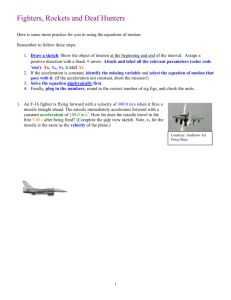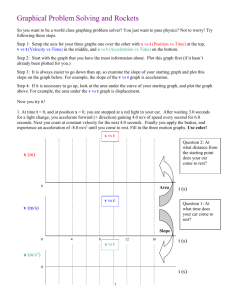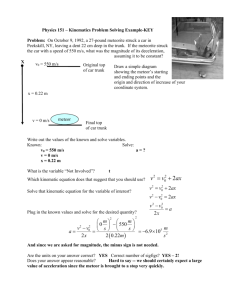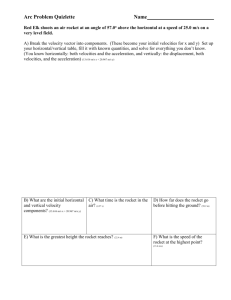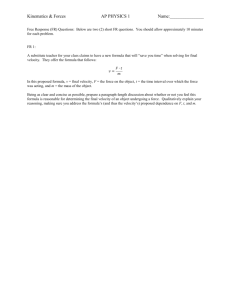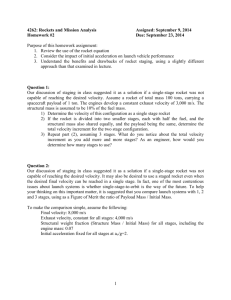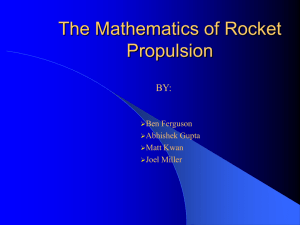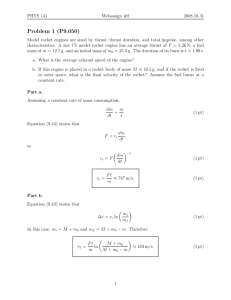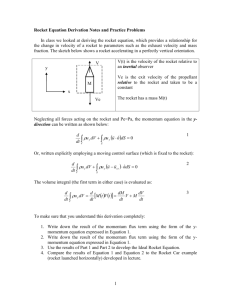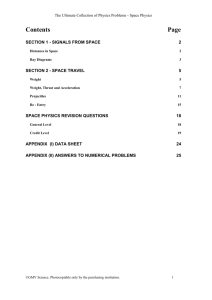1-D Practice Midterm
advertisement
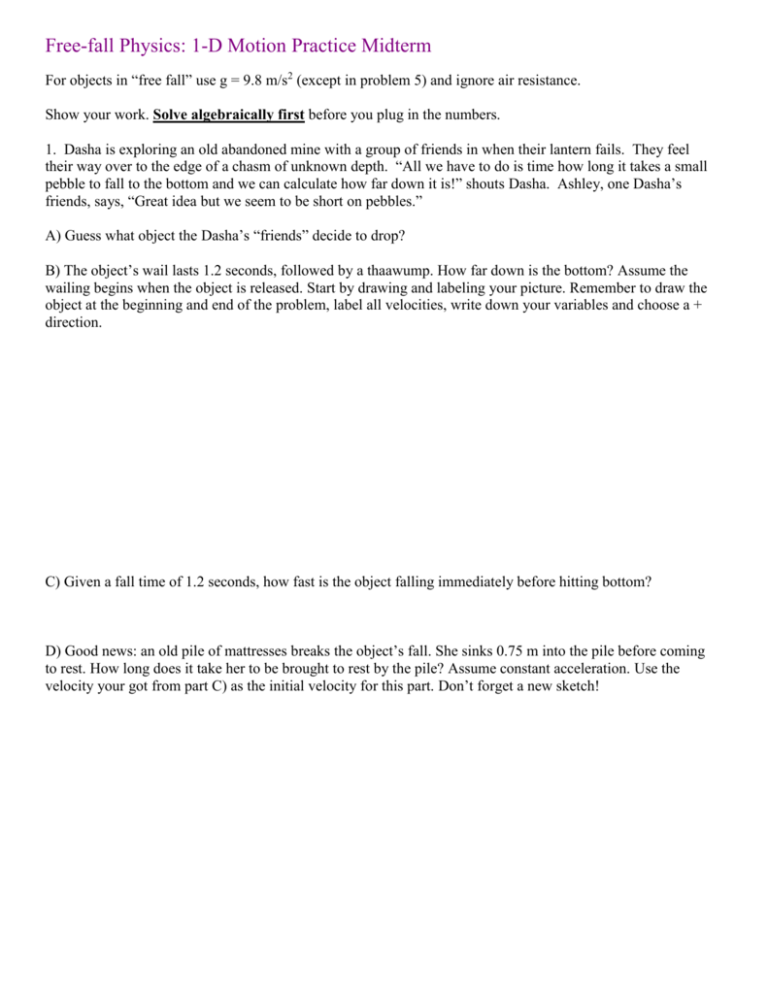
Free-fall Physics: 1-D Motion Practice Midterm For objects in “free fall” use g = 9.8 m/s2 (except in problem 5) and ignore air resistance. Show your work. Solve algebraically first before you plug in the numbers. 1. Dasha is exploring an old abandoned mine with a group of friends in when their lantern fails. They feel their way over to the edge of a chasm of unknown depth. “All we have to do is time how long it takes a small pebble to fall to the bottom and we can calculate how far down it is!” shouts Dasha. Ashley, one Dasha’s friends, says, “Great idea but we seem to be short on pebbles.” A) Guess what object the Dasha’s “friends” decide to drop? B) The object’s wail lasts 1.2 seconds, followed by a thaawump. How far down is the bottom? Assume the wailing begins when the object is released. Start by drawing and labeling your picture. Remember to draw the object at the beginning and end of the problem, label all velocities, write down your variables and choose a + direction. C) Given a fall time of 1.2 seconds, how fast is the object falling immediately before hitting bottom? D) Good news: an old pile of mattresses breaks the object’s fall. She sinks 0.75 m into the pile before coming to rest. How long does it take her to be brought to rest by the pile? Assume constant acceleration. Use the velocity your got from part C) as the initial velocity for this part. Don’t forget a new sketch! 2. Use a carefully labeled graph to derive the following equation of motion: v vf x 0 2 t Make sure you have all of the Equation of Motion derivations in your PJ… 3. You are driving the new Bugatti Veyron at a blistering 95 m/s when you drive straight into a giant haystack. You come to rest after penetrating a distance of 25 m into the stack. Assuming that your acceleration was constant: A) What was your acceleration in coming to rest? (Sketch it!) B) How long did it take you to come to rest? New sketch… 2 4. A) Sketch plausible x vs t and a vs t graphs, given the following v vs t graph. Let x = 0 at t = 0. x vs t x 0 t v vs t v 0 A B D C t a vs t a 0 t B) Write down whether the velocity and acceleration of the object is +, - or 0 for each interval. AB BC CD velocity acceleration 3 5. A toy rocket leaves the ground at t = 0 and x = 0, and accelerates upward at 5.0 m/s2 for 6.0 s. (Assume that the upward direction is defined to be positive.) At t = 6.0 s the fuel runs out and the rocket is in free fall until its velocity reaches -30 m/s. At the instant the velocity reaches -30 m/s a drogue chute is deployed, suddenly* changing the rockets velocity to -25.0 m/s. The rocket falls the remaining distance to the ground with a constant downward velocity of -25.0 m/s. A) Sketch in the v vs t graph. Assume that g = 10 m/s2 for simplicity. v vs t v +30 (m/s) +20 +10 0 2 4 6 8 9 10 12 14 16 18 -10 -20 -30 B) When does the rocket reach its highest point above the ground? C) What is the rocket’s highest distance above the ground? (Show work on graph.) D) At what time does the rocket hit the ground? * By suddenly we mean almost instantly. What will this look like on your graph? 4 20 t (s)

